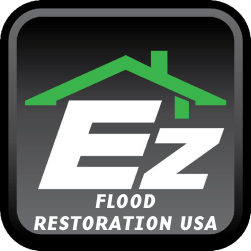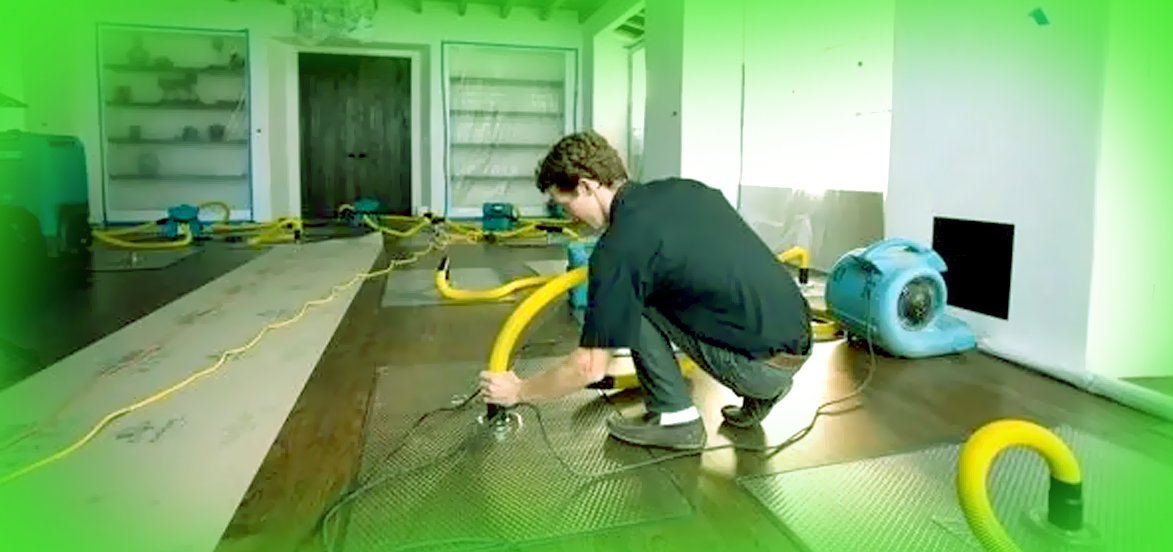How Do You Clean Up Flood Water In San Diego?
Due to rising concerns about health and safety in flood-damaged properties, homeowners need to be exceptionally vigilant about flood cleanup. To err on the side of caution is fine, but even slight negligence that happened unawares could affect your wellbeing.
Cleaning up after a flood is not like cleaning up after a plumbing disaster that led to indoor flooding or basement flooding. The type of water and pollutants that enter through floodwaters could be much more dangerous than the flooding caused by a water line leak.
Floodwaters can cause extensive damage. Wood swells and rots, wallboards will crumble, and most paper products are ruined. Most parts of the home are penetrated by dirt, dust, insects, and, in some cases even, small dead animals and refuse washed in by the water. In many areas, water rats or rodents also enter the scene.
If the property owners are fortunate enough to have a good flood insurance policy that covers restoration and cleanup, and repainting, the financial loss can be considerably reduced. However, many of the long-term issues that emerge weeks, months, or years after the floods have subsided will not be protected by insurance.
Mold-related concerns are at the forefront of potential future issues. Mold and mildew can grow on almost any surface, and dampness accelerates their growth and spread. They are hard to eradicate or even discover.
These fungi’s spores are small and light enough to be transported around the property by air currents. They can easily settle on surfaces and stay dormant for months, if not years. Then, when the circumstances are conducive, an improvement in the air temperature of a room—new colonies germinate and re-infest the areas.
When you search for flood cleanup near you, a number of service providers could turn up. Ensure that the company you contract with has licensed, insured and certified professionals with extensive experience in flood cleanup in San Diego.
Key Points to Make Flood Cleanup Effective
Floodwater Classification
It’s critical to first understand the extent of the water intrusion before determining the best cleanup strategies. Different requirements for proper remediation are expected based on the sources of floodwaters.
The Institute of Inspection, Cleaning and Remediation Certification (IICRC) has established a classification system for flood water damage that can be useful when conducting flood cleanup in San Diego. This classification is not based on the color or shade of the water. Rather, the classification is done based on the source of the water, its content, and level and type of contaminants.
Water That Is Free Of Contaminants
The word “clean water” refers to water that does not pose a direct threat to one’s health. Broken water pipes, malfunctioning equipment, showers, storage tanks, snowmelt, and rainwater are examples of waters that do not involve pollutants.
Clean water, on the other hand, can quickly deteriorate into grey water after 48 hours, particularly if it comes into contact with external walls or any source of pollutants.
Grey Water
Also called Category 2 Water, this water might have some level of chemicals and contaminants – just like the water from drain lines coming from the washing machine, bathing, cleaning, and kitchen sinks, etc. grey water will have dirt, grease, soap scum, bleach, hair, etc.
Although grey water does not cause serious illness risks or health hazards, it could allow disease-causing organisms to be transferred through contaminated hands or direct contact with walls and exterior elements.
Also, time is crucial; grey water could, over time, become highly contaminated, especially after 48 hours, posing serious health risks to you and your family. It could turn into black water or Category 3 Water.
Black Water
Black water is toxic. Water that contains soil, waste or refuse of animals or humans, wastewaters, and microbes such as bacteria, arthropods, molds, fungus, and viruses is called black water or Category 3 Water.
Microbes present in black water have been linked to cholera, tuberculosis, hepatitis, and a variety gastroenteritis-related illnesses. Diarrhea, nausea, vomiting, fever, and extreme abdominal cramps, and mortality risks exist if black water gets inside human beings. Contamination from feces can also involve the so-called “cruise-ship virus,” which is known as norovirus, as well as parasitic illnesses caused by giardia infections.
Action with polluted water or materials can cause skin contamination, which can then spread to the mouth. Diseases can occur as a result of inhaling microbes polluting aerosols and airborne dust during and after the drying process if proper precautions are not taken. Even the dust and dirt in there can cause allergies in people who are allergic to them.
Cleaning Up After A Flood
Flooding In Both Clean And Grey Water
The importance of time cannot be overstated. Health and safety issues are unlikely in the cases when clean and grey water flooding in the property is completely dried out within 48 hours, and the cause of the issue is identified. Note that in the case of grey water floods, the issue should be listed as a black water situation after 48 hours.
Flooding Caused By Black Water, Which Includes Waste
There is a health risk when river waters overflow their banks, excess rainwaters wash organic matter into homes, or sanitary sewage backflow and overflows occur in houses. Inspections, testing, and reporting should all be done only by the experts in flood cleanup in San Diego and with diligence.
Sewer leakage within houses may be triggered by blocked or broken pipes, overmatched sewer systems, or merely by heavy outdoor rains entering through leaky sewer pipes, even though there is no apparent flooding. Following an incident involving black or wastewater in a house, the owner should expect the following queries from the tenants:
- Was the cleaning a complete success?
- Will the polluted area be reoccupied safely?
- How is this known with certainty?
Recommendations For Dealing With Sewage-Contaminated Areas And Products
Cleaning up sewage spills by in-house building maintenance staff is not recommended unless they have the required certifications. Professional and skilled sewage remediation contractors that offer flood cleanup near you would follow standards and rules.
- Make sure the electricity is switched off, and there is no risk of electrocution before allowing employees into any flooded area.
- The use of adequate personal protection equipment is the first priority. Rubber boots, hand sanitizer, eye protection goggles, and a facemask with a fine particle efficiency rating of at least 95% are needed. That workers’ hands and faces should be properly rinsed with copious quantities of soapy water after removing their PPE.
- Dry the area as soon as possible, then vacuum out the polluted water with wet vacuums or water pumps and dispose of it in sewer lines rather than stormwater drainage. It is against the rules to dump black water into storm drains, which is likely to produce sewage and other pollutants such as pesticides, toxic substances, inorganic chemicals.
- To increase air circulation and eliminate water vapors from the air, use rotating devices and air conditioners.
- Small rugs and carpets may be covered in plastic and extracted from the house for skilled cleaning. Rugs that have been polluted with sewage should not be submitted to a regular commercial carpet cleaner.
- When polluted by black water, it is difficult to correctly and completely clean wall-to-wall flooring and associated elements. If any residue of harmful bacteria or various pathogens are left behind, it could create health hazards in the future, especially for kids and the elderly. It is better to dispose of them for health purposes. Besides, once a wall-to-wall carpet is fully wetted, it seldom returns to its original size, which is an issue in itself.
- Cut out and strip any wallboard products that have been polluted by wastewaters. Broaden the removal area by 12 to 18 inches above the floodwater’s watermark or height. The wallboard can draw polluted water up the center of the board above the waterline through capillary action.
- Any roofing elements that have been contaminated by sewage water should be discarded.
- All insulation materials that have been wet by black water must be removed, whether they are plastic foam, fibrous plastic, sponge latex, or cellulose.
- The majority of solid wood products can be washed and dried. Hollow wood doors, on the other hand, also have wooden spacers inside that break their shape when wet. Wood laminate doors and furniture, particularly plywood, are prone to delamination and peeling. These products should be destroyed if they buckle or dampen after being flooded.
- Vinyl wall coverings prevent the wall from drying out. In most cases, the wallpaper adhesive used to adhere the wallpaper to the walls includes polymers, which is a favorite food of molds. All wet wall coatings should be extracted and destroyed as a result of these factors.
- Upholstered furniture, products, furnishings, and furniture made from compressed wood products that have been wet by sewage-contaminated streams would be hard to disinfect properly, so disposal is the best option.
- Dispose of any infected documents, cardboard boxes, or archives.
- Foodstuffs and drink containers, and even screw-capped food or drink containers immersed in floodwaters should be thrown away.
- All solid wood, concrete, vinyl tile, porcelain, metal, glass, and plastic objects should be thoroughly washed and decontaminated or sanitized. One part domestic bleach to ten parts water is a combination that works in many cases. Make sure the bleach solution is in contact with the coating for a minimum of one minute. After that, re-clean with a detergent and thoroughly dry all surfaces. It’s worth noting, however, that a bleach solution has the potential to discolor certain finishes.
- Any wet air filters in main or supplemental air handling systems must be replaced right away.
- Decontaminate any region suspected of being polluted with black water.
- If any technician or cleanup team member becomes sick within 72 hours of cleaning, they should consult with a doctor right away.
EZ Flood Restoration, We’re Here To Help You 24 Hours A Day, 7 Days A Week!
EZ Flood Restoration is a company that helps thousands of Californians every year to restore their homes and business premises following flood and water damage. We have 30 years of experience with flood damage reconstruction, fire damage restoration, mold inspection, mold cleaning, and other kinds of property damage restoration.
We not only help our customers to recover their homes or offices but also give them full support and guidance with their insurance filing processes. These include investigations, documentation, quick measures, and progressive damage prevention activities.
Our support helps property owners file clean, honest claims and get maximum coverage as per their policy. This is often unlikely when property owners work with preferred vendors of insurance companies.
When you’re searching for flood cleanup in San Diego, we realize how stressful it can be, so we do the best to make the process as seamless as possible.
You do not have to contact multiple contractors for structural repairs, electrical repairs, plumbing repairs, etc. EZ Flood Restoration serves as a one-stop solution center for complete flood damage restoration. From salvaging the maximum of your belongings to correctly disposing of irreparable items, from water extraction to complete dry-down and decontamination, from repainting walls to reconstruction support, our services include all.
Searching desperately for “flood cleanup near you” might not always connect you to a 100% reliable, affordable and comprehensive provider of flood cleanup in San Diego. EZ offers guarantee-backed, 100% secure, safe, and perfect flood damage repair services in San Diego.
When it comes to damage repair facilities, know for a fact it’s not worth cutting corners. Your home is worthy of the best. Get in contact with us right away for a free estimate!


